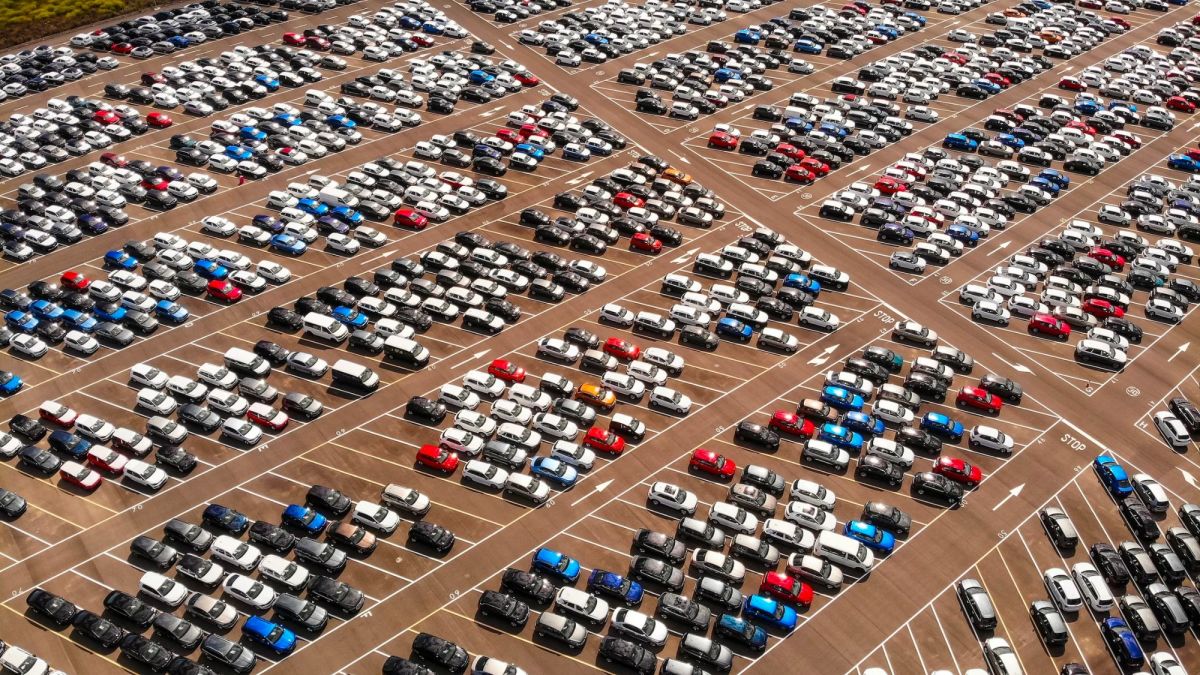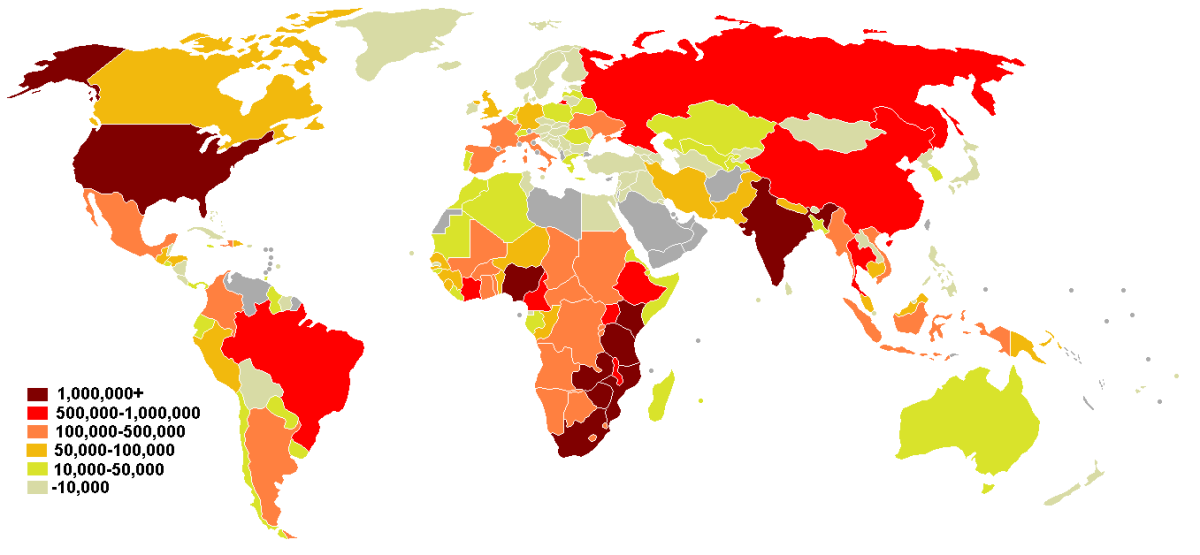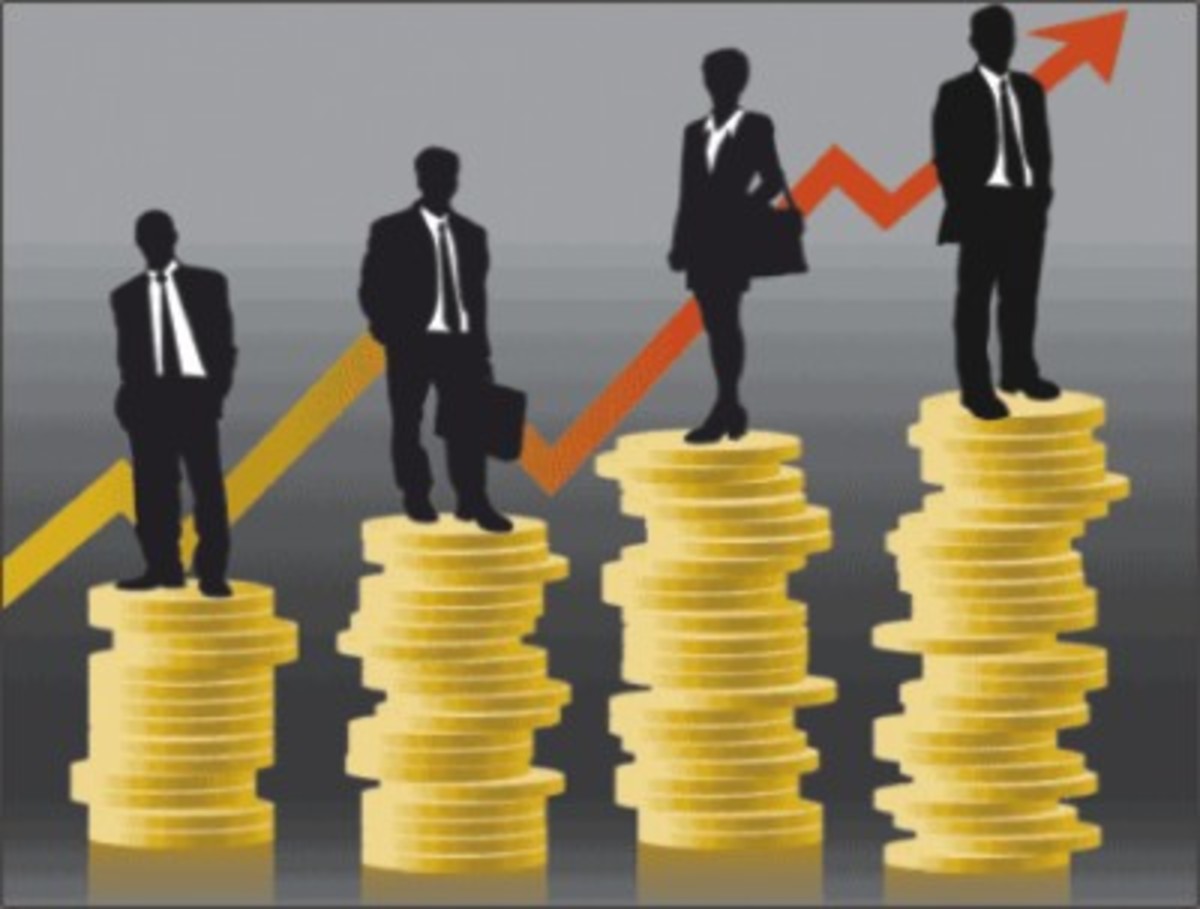How Developing Countries Can Finance Development by their Own Domestic Loan
Finance development by domestic loan, pay loan from fruits of productivity
We say that the definition of development and the power to attain objectives of development decide how a developing country becomes developed. Attainment of objectives result in outcome. We distill our definition of development and lay down strategies and tactics with the use of a framework. To pursue an outcome we employ policy. Let us devise a policy of development that suits our situation..
Before plowing ahead let us give some measures of development. We want to increase employment rate to double digits. We want to increase income level to above poverty line. We want to improve health care. We want to increase food supply, at least self-sufficient in staple foods. We want to maximize use of land and increase employment rate. Let us set inflation rate at 3 to 5% and improve literacy level to 95%.
Some of these wants are causes, others are effects. For example, health care is an effect. Literacy is also an effect. Increase in food supply is also an effect. So do employment rate and income level. It looks like the only causes left are use of land and investment. Of course, let us not forget the human factors like integrity, honesty, intellect. Let us add knowledge, social organizations, and power. It looks like the cause-and-effect framework is inadequate to analyze our wants and measures.
Power is the ability to attain objectives, wrote Bertrand Russell, Nobel Prize winner in his book “Power.” He classified power as naked power (use of force); persuasive power (ability to convince); executive power (authority accruing to position like a president of a company); economic power (use of means of exchange to obtain goods and services); and priestly power (use of magic and faith).
I have a Hub “A Framework Useful for Developing Countries to Become Developed.” This framework consists of Resources, Power, Indicators, and Outcome.
We shall see how measures and wants fall in this development framework.
Let us go back to the development of a policy called Extra Oxygen Policy of Development. Let us use a biological process called oxygen debt.
What is oxygen debt?
A person who competes in a 100-meter dash or in boxing uses his anaerobic system for energy. Anaerobic means oxygen is not used in real-time. The energy in anaerobic system had been stored earlier in the liver in the form of glycogen and in the muscles in the form of glucose or blood sugar. But energy in the anaerobic system is of small amount. It can provide energy for a working person for a period of “15 to 30 min” (Astrand, P. MD. And K. Rodahl, MD. 1970. Textbook of Work Physiology, physiological bases of exercise.1970:32). After that the aerobic system that uses oxygen in real-time gives the energy.
“Anaerobic reactions are primarily used in high-intensity exercise of short duration, e.g., 100-yard sprints or heavy weight lifting, and aerobic reactions are primarily involved in low-intensity, long duration exercise such as walking” (Skinner, J.S., Ph.D. 1981. Body Energy. 1981:36).
Energy from the anaerobic system is like a loan from the bank. The body must keep a store of energy at all times such that any withdrawal from the anaerobic system (the bank) must be repaid.
During the first three rounds of a championship fight in boxing, the boxer uses energy loaned from his anaerobic system. For example, in his fight with Shane Mosley (an American) Manny Pacquiao (a Filipino) got a loan of energy from his anaerobic system. He had not yet activated his aerobic system. It takes time, about 15 minutes, to activate this system, says Skinner.
While Pacquiao was activating his aerobic system he must also repay his oxygen debt. He must inhale 24% extra oxygen, the interest of the loan, as it were. He won his boxing bout with Mosley.
The policy
Some kind of principle can be derived from oxygen debt, as follows:
Our body always maintains a reserve energy that a part of it when utilized must be replenished. A loan of energy is taken from stored energy; it is guaranteed with future harvests. This loan is used to jump start a long-term real time production of energy. The loan is also repaid once real time production of energy is in progress that is sustained.
This derivation can lead to a policy as follows:
"To attain development by creating a domestic loan coupling it with a counterpart and using this whole package for productivity that results in expanded economy, build up of human capital and higher standard of living."
Let us call this "Extra Oxygen Policy of Development."
Before the loan
Before the bout with Mosley, Pacquiao had trained hard; increased the number of his mitochondria that manufacture energy; increased the number of his hemoglobin to extract more oxygen from the air; and stored in his mind the style of Mosley with a corresponding counter strategy. In other words, Pacquiao increased his knowledge, skill, and power.
Let us plug factors into our development framework (although I am not turning it into a How-to manual):
Resources
Loan (Php 100 billion); counterpart (Php 100 billion); farms; mineral deposits; biofuels; fibers; medicinal plants; copper, gold, silver, nickle, marble stones; resorts; ecotourism spots; fructose sugar concentrates; mangoes; bananas; pineapples; bamboos, rattan, native varieties of rice; services; hydropower; natural gas; seafoods; carageenan; poultry and livestocks; technology; solar energy; wind energy
Power
Will to make the loan; capability to produce; ability to pay the loan, will to resist foreign interference
Indicators
Inflation rate (3 to 5%); income level (above poverty line); literacy rate (95%); morbidity (lessened); satisfaction (level 7 in a scale of 1 to 10), distribution of land ((7 hectares per family), human capital buildup; productivity; efficiency; productivity loan; etc
Outcome
Increased economic performance; improved health; improved ability to earn, higher standard of living; greater satisfaction
Nature of the loan
The loan is a domestic one, that is, it is not a foreign loan. It is not guaranteed with a foreign loan. We guarantee it with our productivity.
Make an entry in the book of accounts of the Treasury for Php 100 billion. Make this available for purchase by commercial banks and rural banks at a discount that will translate as profit for the banks. These banks will lend them out for use in productivity purposes in: farming, fishing, manufacturing, mining, processing, export, services, etc. Give liberal interest rates.
Will to make the loan
Most countries, especially members of the IMF and World Bank, are afraid to make a loan on their own country. That loan consists in making an entry in the book of accounts. That will to make such a loan is accompanied by a will to productivity. At a small scale, it is like making a non-collateralized loan whose payment is guaranteed by a harvest from the use of the loan.
Some countries do the expedient step of guaranteeing the expansion of their economy with a foreign loan. When harvests out of the foreign loan are deficient owing to corruption or low productivity, they will end up the poorer after paying back the loan.
Book of accounts entry is now the way of creating money in the floating rate system. It was different when the gold standard was still around, that was abandoned by President Nixon of the U.S. in 1971, by the world in 1973. In the gold standard, an ounce of gold was worth US$35 dollars as set at the Bretton Woods conference in July 1944; with the US dollar taking over the pound as world currency.
Under the gold standard, a country can make an entry in the book of accounts if it has a sufficient bullion of gold to back it up. That is, it should have a bullion of gold worth US$50 billion in its vaults before it could make an entry for US$50 billion in its book of accounts. If it did not have that gold reserves, it could create money through making a foreign loan from the World Bank or from a merchant bank.
"In the long run, a country's exchange rate depends on such fundamental factors as relative productivity growth, opportunities for investment, the public's willingness to save, and monetary and fiscal policies. These fundamental factors are at work whether the country has a fixed or a floating exchange rate and whether the authorities intervene to adjust the exchange rate or slow its changes. As long as markets for goods, services, assets, and foreign exchange remain open, the country must adjust" (Encyclopedia Britannica 2009).
The floating rate system works because it is backed up by power. If a loan recipient defaults, it will be at the receiving end of reprisals like ban of its exports to other countries, limitation of foreign exchange reserves, blacklisting, ban of exports to that country, ban of aid to that country, creation of political trouble, depose of a ruling clique or dictator, and many more.
Total financial investment
So the total investments for productivity is Php 200 billion, minus interest of 5%, which we will pay to our own country. That is, it will constitute an increase in our economy.
We decide how we use the productivity package. Let us call it "Extra Oxygen Productivity Package," EOPP for short..
Because we make that loan on our own country, we will have expanded the assets of our country by Php 100 billion when we will have paid it back.
Capability to produce and ability to pay the loan
This is a broad area. It includes mechanism by which the loan of Php 100 billion is purchased by the banking system at a discount. A campaign is launched to attract producers to avail of the loan. A productive atmosphere is fostered like the redistribution of land in a feudal country. It involves people organizations, like cooperatives, and organizing when social organizations are lacking. Access roads are built. Storage facilities are set up. The whole gamot of production and marketing are mobilized.
I was involved in the "Masagana 99" program in the 1970s in my country. Its objective was to produce rice sufficient for our people. "Masagana" means plentiful; " 99" means that the target production was 99 cavans per hectare; hitherto the average yield per hectare was 70 cavans. We did not make 100 cavans as the target because it might appear to farmers as too perfect that it might turn them away.
A foreign loan was made available. Attached to the loan was the services of a top American advertising company (J Walter Thompson, the one that marketed the Gulf war) to sell "Masagana 99." Imported fertilizers, herbicides, fungicides and insecticides were applied.
I was in charge of packaging samples of fungicides, fertilizers, herbicides, insecticides, seeds of high yielding varieties (HYV) of rice that were given to farmers for free, nationwide.Some packages were shipped; others were airlifted to island provinces. Dr. Reeshon Feuer of IRRI (International Rice Research Institute) loaded a lot of them in his car to the then Manila International Airport, now Ninoy Aquino International Airport, some 50 kilometers from our packaging shop at the College of Agriculture, University of the Philippines at Los Baños, Laguna.
Credit was made available to farmers. Thousands of farm technicians were hired to teach the modern technology of growing rice and assist farmers in applying for loans. Radio was tapped to advertise the program.
The HYVs were the products of breeding work by the International Rice Research Institute, funded by multinationals, a brainchild of Nelson Rockefeller, located in the Philippines. The Masagana 99 program was a showcase of green revolution. The HYVs were largely a failure because they were attacked by tungro, a disease that scorched the leaves and turned them brown. It was the first time tungro appeared in the Philippines. What saved the day was a tungro resistant variety, C4-63G, a hybrid developed by a Filipino scientist, Dr. Pedro B. Escuro, who was born to a a rice farming family, employed by then College of Agriculture, University of the Philippines, now University of the Philippines at Los Baños. (I wrote a brief biography of Dr. Escuro, National Scientist for Plant Breeding, included in the book "Philippine National Scientists 1978-1998").
Some more drawbacks were discovered. Some farm technicians made up loan applications for fictitious farmers; loans were granted involving millions of pesos. Crop failure owing to tungro made farmers unable to repay their loans. A lot of farmers resisted the program owing to land tenure, tenancy. Masagana 99 profited the landlords more than the farmers who tilled their land. Another factor was that the country was under martial law, under the Marcos dictatorship when movements were restricted by curfew. For some years, the country was self-sufficient in rice. Overall, green revolution is a failure in the Philippines.
A national productivity program entails a massive mobilization.
Belt tightening, more hard work and a little patience
During the time of production, the work force will put in more work. During the time of paying back the loan, people will tighten their belt and have a little patience. The rewards will come during the real expansion of the economy and when it will have expanded.
Minimal inflation
We will incur a minimal inflation because we have put up a counterpart and we have used EOPP in productive activities rather than in lining the pocket of corrupt officials. Used otherwise, EOPP will result in inflation where prices are high, among others.
Expanded economy
When we will have paid back the loan of Php 95 billion plus interest, we will have expanded our economy by Php 100 billion.Expansion in economy means more jobs, higher level of income, and more income to send our children to school, more cash to pay for medication, and higher standard of living.
Those are the prizes we reap from our will to make the domestic loan, capability to produce and to pay, and our will to resist foreign intervention.
Sustained program in extra oxygen policy of development
The program must be sustained. Say, five years in the first phase, another five years in the next phase, then another five-year programs.
We must stay firm because the IMF will come and try to bother us if we are a member of the IMF.
Good if the chairman of the monetary board of the central bank is cooperating with the political leadership. At least the President must dance with him; or when the appointment of a new chairman is up, he can recommend a more friendly prospective chairman. In the Philippines, the tenure of an appointee to the central bank is six years. The president chooses candidates and recommends them to the Senate that also serves as commission on appointment at the highest levels.
The present chairman had been appointed by former president Gloria Macapagal-Arroyo on the recommendations of then Secretary Cesar Purisima of the Finance department. When Purisima bolted the cabinet of Macapagal-Arroyo on allegations of corruption on the part of the president, the central bank chairman stayed put, being untouchable by political turmoil. Upon his ascension to the presidency, President Benigno C. Aquino III appointed Purisima to the Finance department. Purisima recommended the reappointment of Armando Tetangco to the Central Bank who is now into the second year of his new appointment as chairman. Tetangco issued some new bank policies like giving loans for productive purposes without collateral. The central bank will assume the penalties for a recipient who defaults on his loan.
If I were able to obtain such a loan I would repay my loan pronto! Then I would be eligible for another loan.
Other policies
There are several development policies floating around, some had been used voluntarily others had been rammed through on some counties.
There is foreign investment that entails repatriation of profits. There is foreign loan that involves payment of capital and interest to a foreign country or merchant bank. The foreign loan will be paid whether it went to the pockets of corrupt officials or to productive activities. If it went to pockets, the people who will pay will be the poorer.
Have courage
The Extra Oxygen Policy of Development demands a lot of determination, knowledge, skill, cooperation, sweat and patience.









